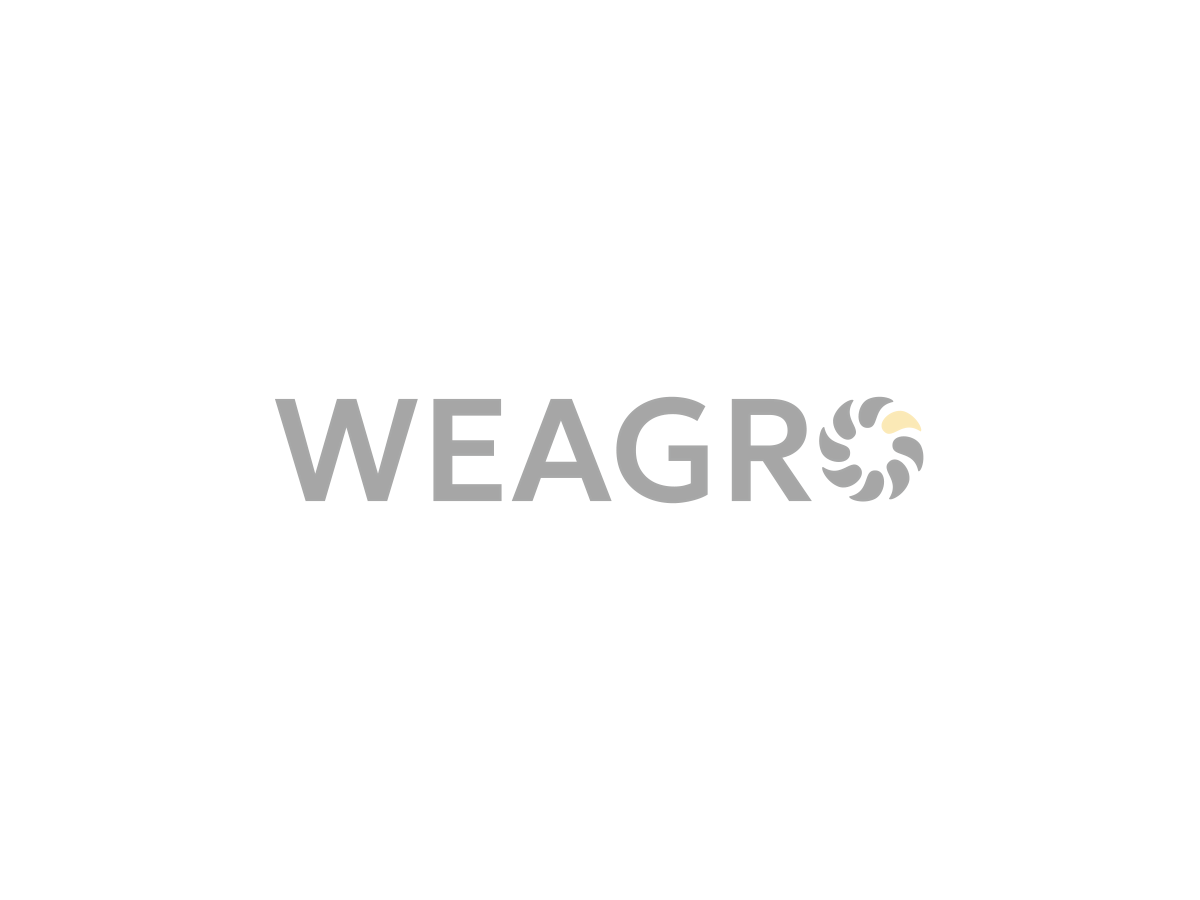Embedded finance is one of the top business development trends of the 2020s. This technology provides businesses and consumers with quick access to financial services without the need to contact banks. It significantly accelerates deal-making, increases transaction amounts, and helps companies scale their operations more easily.
In this article, we will examine in detail the essence and benefits of embedded financial solutions. You will learn about their main types and see examples of real integration of new technologies into Ukrainian business. This material will be particularly useful for companies that are suppliers of equipment, seeds, spare parts, innovative services, and other goods and services in the agricultural sector.
What is Embedded Finance
Embedded finance is the integration of financial services into digital platforms across various industries, such as agriculture, retail, service provision, and others. This typically involves services such as instant payments, lending, installments, leasing, insurance, and investment. However, this list is constantly expanding thanks to technological development.
The embedded financial innovation sector emerged in the early 2000s. Amazon and PayPal were the first to introduce convenient solutions for online payments and instant lending. In the 2010s, this technology appeared in the ecosystems of Apple, Uber, Shopify, Airbnb, and other representatives of modern innovative business.
Today, embedded finance is a dynamic, highly competitive market where dozens of well-known companies and ambitious startups operate. According to consulting agency

Benefits of Embedded Finance
- Accessibility of financial services. Thanks to new technologies, companies that are not financial institutions can offer their clients installments, lending, instant payments, insurance, and other similar products. For example, the WEAGRO service allows integration of agricultural installment services into mobile applications, online stores, or websites. Access to it is provided automatically — there is no need to process and submit each application manually.
- Convenience for clients. To get installments, make a payment, or use other services, users do not need to leave the platform by opening other websites, launching applications, or calling the bank. Embedded finance allows them to do this on the current page, simplifying the sales process and reducing the number of steps to complete a transaction. This increases conversion rates and customer loyalty, as well as improves brand reputation.
- Budget optimization. More deals mean more revenue. Additionally, financial companies often provide active partners with additional bonuses. At the same time, embedded finance technologies allow cost reduction through automation and optimization of many work processes. If an application is submitted and processed automatically, there is no need to create additional staff positions for lending managers.
- Expanding target audience. Embedded financial integrations make expensive products more accessible to consumers. For example, by offering agricultural installments from the WEAGRO online service on your website or mobile application, you can work not only with large enterprises but also with small farms. This allows entry into new segments, increasing sales volume and avoiding direct competition with larger companies.
- Service personalization. Embedded finance systems collect useful information about clients. This allows development of individual solutions for each of them. Sender research shows that this positively affects conversion in 84% of cases. Moreover, today about 71% of users are not satisfied if a seller’s website or mobile application does not contain any personal solutions.
Read also: Factoring and factoring operations: what it is and how it works in Ukraine
Types of Embedded Finance
Above, we have already briefly listed the services currently represented in the embedded finance segment. However, to understand the essence of this technology and business trend, they should be examined in more detail.
Embedded Banking
Another name is “Banking as a Service” (BaaS). However, this name can be misleading, as it refers not to a specific service but to comprehensive service. BaaS allows website or application users to access multiple financial products, such as investment, payments, and deposit accounts.
This is exactly how the partnership between Uber and Green Dot companies works, for example. The latter acts as a financial services provider, allowing taxi service drivers to open cards directly in the mobile application, transfer remaining funds to deposits, and receive advice on rational money management. Similar solutions can be seen on the Stripe platform, which signed a partnership agreement with Goldman Sachs bank, as well as on Airbnb, which allows property owners to instantly open accounts with JPMorgan Chase.
Embedded Payments
This is the most popular direction for integrating embedded financial solutions. Payment services allow payment for goods and services with one tap on a touch screen. In many cases, users do not even need to go through two-factor authentication, making the process very fast and comfortable.
There are many examples of such integrations. They mainly involve top payment services Google Pay and Apple Pay. The latter is used by 85% of retailers in the USA, as confirmed by statistics from its developer. In Ukraine, as well as countries in Asia and Africa, Google Pay is more popular. Other similar well-known services include PayPal, Marqeta, Klarna, Afterpay, Affirm, Braintree, and WePay.
Installments
The “buy now, pay later” (BNPL) service. In the B2B segment, it is called factoring. In it, a third party acts as a guarantor who pays the seller the required amount and accepts regular payments from the client. The seller pays commissions for this — a certain percentage of the purchase value. However, this is convenient and profitable for them, as they expand their audience and get new deals that would be impossible to conclude otherwise.
Read also: What Is Installment Payment: Difference Between Credit and Installment
An example of such a service in Ukraine is the WEAGRO service. It allows simplification of agricultural installment services for suppliers selling agricultural goods to farmers and large enterprises.
Embedded Lending
Fully automates the process of submitting an application to a bank or other financial institution. By clicking a button and filling out a simple form, the user launches the scoring and risk assessment process. Usually, a response comes within the next few minutes. With proper process organization, during this time the client can communicate with a manager or study commercial offers. This allows retaining their attention and increasing the potential deal amount.
Among top international embedded finance solutions, we can also mention Shopify Capital and Amazon Lending, which allow sellers to sell their products on these platforms on credit without signing agreements with other companies.
Embedded Insurance
A system that allows obtaining an insurance policy in addition to the main product. In tourism, this is life, baggage, and flight insurance; in real estate — housing and commercial space; in car sales — CASCO and liability policies. The convenience lies in the fact that the client does not need to contact a financial company. The policy is issued instantly and provided together with the main product.
One of the top examples is the Tesla Insurance program. Insurance is provided not even in the car dealership, but directly in the electric vehicle’s software. The system automatically calculates policy cost, deductible, payout amount, and other parameters. For this, it evaluates hundreds of parameters, including driving style and average trip duration.
Embedded Investments
A fairly young direction in the embedded finance market that is in the stage of active development. Embedded investments allow users to invest free funds in valuable assets that can generate stable income. Usually, such platforms have investment consulting services — requests to real experts or advice based on artificial intelligence.
An example could be the Cash App Investing platform. It is integrated into various payment applications. Using it, a user can view available assets, average return levels, and risk assessments. This allows them to make the right choice by weighing all pros and cons.
Embedded Finance Trends for B2b Segment
- Increasing market coverage percentage. More and more companies are using embedded finance on their websites, in mobile applications, CRM, ERP, and other software. This allows them to optimize business processes by reducing costs and improving their competitive positions.
- Expanding financial ecosystems. Today, embedded finance is not just quick one-click payments. It is online lending, installments, factoring, and insurance. Companies that have implemented new technologies are gradually increasing the number of available services.
- Supply chain automation. Embedded finance can be used to automate payments for raw materials, materials, and other resources. They also optimize the process of selling finished products. This increases the efficiency of all business processes, reduces delay levels, and eliminates shortages of resources or products in warehouses.
- Artificial intelligence integration. Machine learning technologies allow companies to predict and forecast customer behavior — their orders, needs, and capabilities. Thanks to this, companies can offer personalized solutions, increasing conversion rates and average deal amounts.
- Decentralized Finance (DeFi). Using blockchain helps make the embedded finance sphere even more transparent and accessible. Smart and automated contracts allow clients to work directly with service providers, without intermediaries. This is faster, more profitable, and safer.
- Working capital management. Currently, a number of platforms for working capital management are being created, including those based on artificial intelligence. They allow accurate forecasting of cash flows, automating invoice processing, and controlling accounts receivable levels.
Examples of Embedded Financial Solutions Implementation in Ukraine
- WEAGRO. An agricultural installment service that allows farmers and large farms to purchase raw materials, machinery, equipment, seeds, and other goods under favorable conditions. The online service offers installments without collateral and collecting large document packages. This is an opportunity to get “same-day” financing by quickly concluding favorable terms without additional risks. WEAGRO helps suppliers increase sales by an average of 30%, expand their customer base, and improve reputation in a highly competitive market.
- eDilo. A universal factoring online service suitable for most companies in the B2B sector. This embedded finance solution is more convenient than classic banking products. All processes in it, including counterparty verification and risk assessment, are automated and moved to the online space. This allows avoiding long waits and stacks of documents. Additionally, eDilo easily integrates into websites, mobile applications, online stores, and marketplaces.
- Nova Poshta. The company’s own embedded finance service NovaPay allows the company to provide a range of useful services — payments, money transfers, payments for purchases and parcels, etc. In the first half of 2024 alone, the NovaPay service processed over 193 million transactions totaling 136.6 billion hryvnias.
- Rozetka. The marketplace offers many embedded finance solutions — lending, installments, payments, and even electronics or equipment insurance. Through the RozetkaPay service, 25 million transactions passed in 2023. Monthly, about 1,000 new entrepreneurs connect to it.
- Glovo. The courier delivery service also actively works with embedded finance. In particular, it offers a wide range of payment systems in the application. Additionally, it has credit programs for small businesses and cards for couriers.
Prospects for Embedded Finance Development in Ukraine
Ukraine has developed unique conditions for the development of the embedded finance sector. First, this is progressive business that actively uses technological innovations. This is evidenced by the success of domestic products like NovaPay and the gradual integration of external providers — Revolut and others. Second, the promotion of embedded finance is positively influenced by a strong IT industry that creates about 4.5% of the country’s gross domestic product. Third, this is state support for innovation — solutions like Diia.City and grant programs significantly accelerate the development of this direction.
Therefore, McKinsey forecasts that the embedded finance sphere will grow by 20-25% annually are quite relevant for Ukraine. The consulting agency also predicts that in 2030, about 50% of all financial services will be provided precisely through embedded finance.
The WEAGRO online service offers an innovative solution for suppliers of goods, raw materials, equipment, and agricultural products. By providing factoring services, it allows purchasing these products in installments, making them more accessible here and now. It helps suppliers reach a fundamentally new level of business by increasing sales, improving customer loyalty, and promoting their brand.









